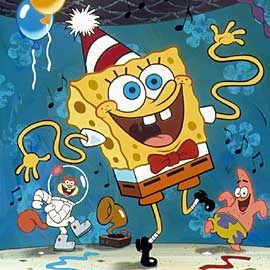

"The Flint stones
to Futurama: Networks and Prime Time Animation"
stones
to Futurama: Networks and Prime Time Animation"
In this essay, we're focusing particularly on prime time animation as a programming strategy within an historical context. What, according to the authors, accounts for the movement of Hanna and Barbera into television and the subsequent growth of animation as a tv program type. How was the emergence of prime time animation in the 1960s a function of the drive to establish ABC as a major network? How were these circumstances replicated in the late 1980s when The Simpsons debuted? What artistic level had animation reached in the Saturday morning cartoons in the 1980s? How did The Simpsons change that? How long did the networks give the new animated series to succeed or fail? What relation did this second animation boom have to the now-adult baby boomers? How much of a role do you think nostalgia plays in drawing the contemporary audience to animation? (Use your own experience to answer this one.) Looking at the case study of the Fox network's rise, explain why they were able to develop programming that would be censored on CBS or NBC? How did King of the Hill relate to the live action programs on Fox? How did Fox use their other programs to promote their new animated sitcoms?
"Synergy Nirvana: Brand
Equity, Television Animation, and Cartoon Network"
Sandler starts by making several observations about the primary differences between programming for broadcast networks and programming for cable stations; what are these differences? What does Sandler mean by "branding" (a term also used by Larson)? In order to explain the importance of branding, he characterizes the very different brand profiles of Nickelodeon, Comedy Central and Cartoon Network. Building on your reading and using your own observations of these channels, be ready to discuss branding in terms of these stations, as well as others with which you're familiar. Why did USA drop Duckman? Why did Comedy Central pick it up? What is the purpose of branding? What relationship does the practice aim to develop between the corporate entity and the individual? Are you "branded" to any company? Scooby Doo is to Cartoon Network as ________ is to Disney? What happened when the creator of Ren and Stimpy did a new take on Yogi Bear and Friends for Cartoon Network? Why did they shelve the cartoons and who might have been happy to pick them up? How many different companies make up the conglomerate that owns Cartoon Network? How does the synergy from this structure benefit the station? Finally, what is the relationship between branding and censorship? How does this play out in different ways at Disney and at Cartoon Network?
[Thanks to Gordon Curtis for the header cartoon, Housebroken.]